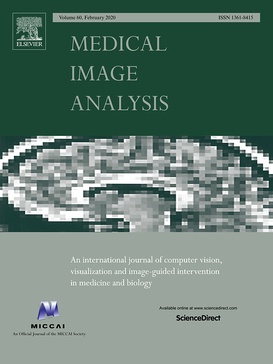
Computer-assisted orthopedic surgery or computer-assisted orthopaedic surgery is a discipline where computer technology is applied pre-, intra- and/or post-operatively to improve the outcome of orthopedic surgical procedures. Although records show that it has been implemented since the 1990s, CAOS is still an active research discipline which brings together orthopedic practitioners with traditionally technical disciplines, such as engineering, computer science and robotics.

The International Symposium on Computer Architecture (ISCA) is an annual academic conference on computer architecture, generally viewed as the top-tier in the field. Association for Computing Machinery's Special Interest Group on Computer Architecture and Institute of Electrical and Electronics Engineers Computer Society are technical sponsors.
HipNav was the first computer-assisted surgery system developed to guide the surgeon during total hip replacement surgery. It was developed at Carnegie Mellon University. The patented technology was licensed out of Carnegie Mellon by the founders of CASurgica, Inc. After several years of attempting to commercialize HipNav, the company ultimately folded. The founders of CASurgica later founded Blue Belt Technologies, Inc.
Allan George Farman is a Professor of Radiology and Imaging Science, Department of Surgical and Hospital Dentistry, The University of Louisville School of Dentistry, and also serves both as Adjunct Professor of Anatomical Sciences and Neurobiology and as Clinical Professor of Diagnostic Radiology of the School of Medicine in the same institution.
The International Society for Computer Aided Surgery (ISCAS) is an INGO, whose purpose to promote all scientific and clinical advance of computer-aided surgery and related medical procedures around the world.
The Computer Aided Surgery is a scientific journal covering all aspects of Computer-assisted surgery (CAS), a surgical concept and set of methods, that use computer technology for presurgical planning, and for guiding or performing surgical interventions.
Computer-assisted interventions (CAI) is a field of research and practice, where medical interventions are supported by computer-based tools and methodologies. Examples include:
Dorin Comaniciu is a Romanian-American computer scientist. He is the Senior Vice President of Artificial Intelligence and Digital Innovation at Siemens Healthcare.
Leo Joskowicz is a Mexican–Israeli computer scientist specializing in medical imaging and computer-assisted surgery. He is a professor in the Rachel and Selim Benin School of Computer Science and Engineering at the Hebrew University of Jerusalem, and former president of The MICCAI Society.

Julia Alison Noble is a British engineer. She has been Technikos Professor of Biomedical Engineering at the University of Oxford and a fellow of St Hilda's College since 2011, and Associate Head of the Mathematical, Physical and Life Sciences Division at the university. As of 2017, she is the chief technology officer of Intelligent Ultrasound Limited, an Oxford spin-off in medical imaging that she cofounded. She was director of the Oxford Institute of Biomedical Engineering (IBME) from 2012 to 2016. In 2023 she became the Foreign Secretary of The Royal Society.

Gregory D. Hager is the Mandell Bellmore Professor of Computer Science and founding director of the Johns Hopkins Malone Center for Engineering in Healthcare at Johns Hopkins University.
Nicholas Ayache, born on 1 November 1958 in Paris, is a French computer scientist and Research Director at INRIA, Sophia Antipolis-Mediterranean Centre. Previously, he was Scientific Director of the Institut hospitalo-universitaire de Strasbourg (2012–2015) and Visiting Professor at the Collège de France (2014). He is also a member of the French Academy of Sciences.
Julia A. Schnabel is Professor in Computational Imaging and AI in Medicine at Technische Universität München, Director of the Institute of Machine Learning in Biomedical Imaging at Helmholtz Zentrum München, and Chair of Computational Imaging at the School of Biomedical Engineering and Imaging Sciences at King's College London. Previously, she was Associate Professor in Engineering Science at University of Oxford where she became Full Professor of Engineering Science in 2014.
Jerry L. Prince is the William B. Kouwenhoven Professor of Electrical and Computer Engineering at Johns Hopkins University. He has over 44,000 citations, and an h-index of 85.

The MICCAI Society is a professional organization for scientists in the areas of Medical Image Computing and Computer Assisted Interventions. Due to the multidisciplinary nature of these fields, the society brings together researchers from several scientific disciplines. including computer science, robotics, physics, and medicine. The society is best known for its annual flagship event, The MICCAI Conference, which facilitates the publication and presentation of original research on MICCAI-related topics. However, the society provides endorsements and sponsorships for several scientific events each year.

Medical Image Analysis (MedIA) is a peer-reviewed academic journal which focuses on medical and biological image analysis. The journal publishes papers which contribute to the basic science of analyzing and processing biomedical images acquired through means such as magnetic resonance imaging, ultrasound, computed tomography, nuclear medicine, x-ray, optical and confocal microscopy, among others. Common topics covered in the journal include feature extraction, image segmentation, image registration, and other image processing methods with applications to diagnosis, prognosis, and computer-assisted interventions.
Jocelyne Troccaz is a French roboticist and researcher in medical imaging and image-guided robotics. She is a director of research for the French National Centre for Scientific Research (CNRS), affiliated with the Computer-Assisted Medical Interventions team (GMCAO) of the Laboratory for Translational Research and Innovation in Medicine and Complexity (TIMC) at Grenoble Alpes University. After originally specializing in industrial applications of robotics, her interests shifted to medical robotics.






